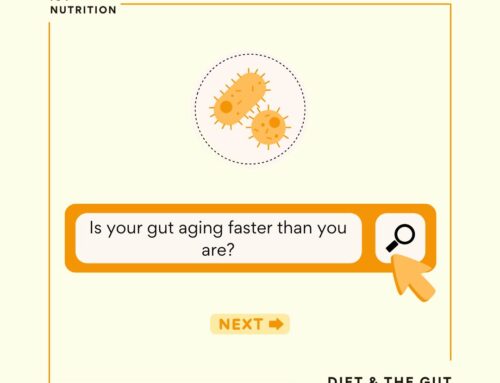Keto. Paleo. Vegan. Vegetarian. Gluten-free, dairy-free, low-carb, carnivore… the list goes on.
With all of the pop diets out there these days, how do you know which ones are healthy and would suit you?
Through this blog series, we’ll teach you how to evaluate diets based on science – no matter what your favorite influencer says about it.
We recommend starting at part one, but here’s a recap. When evaluating diets, you’ll want to check on a few different characteristics, including:
- Fiber intake
- Polyphenol content
- Probiotic / fermented food content
- Electrolyte intake
- Processed food content
- Micronutrient intake
- Caloric intake
- Fat, protein, and carbohydrate intake
- Gluten, dairy, or sugar intake: other triggers
- Price
- Sustainability
- Adherence / lifestyle match
That sounds like a lot – but tracking these criteria is much simpler than it sounds.
Let’s jump in! Today, we’ll look at macronutrients (carbohydrate, protein, and fat).
What are Macronutrients?
Carbohydrates, proteins, and fats are the three main macronutrients found in food. The body needs at least some of each to function properly (1).
What about vitamins? Those are called micronutrients. On the other hand, macronutrients refer to carbs, fats, and proteins. Each macronutrient plays a different role in the body – all are of equal importance (1).
Carbohydrates
Carbohydrates are the body’s most direct source of fuel. Once consumed, they are eventually broken down into sugars such as glucose that your body uses for energy (2).
Carbohydrates play a role in:
- Regular bowel movements (4)
- Hydration (they help the body store water) (3)
- Fiber consumption (plant-based carbohydrate sources often contain fiber)
- May support happy mood due to tryptophan content (5)
- Blood sugar levels (2)
- Much more
There are several sources of carbohydrates out there, including:
- Fruits
- Vegetables (lower amounts)
- Grains
- Rice, oatmeal, wheat products
- Legumes
- Sugar
- Juices
- Much more
Eating enough carbohydrates is essential for adequate energy, but pairing them with other macronutrients is key to blood sugar regulation. Speaking of, let’s take a look at protein.
Proteins
Protein contains building blocks for the body called amino acids. Protein allows the body to:
- Grow (6)
- Repair injured tissues (8)
- Create immune cells, hormones, and enzymes (9)
- Maintain muscle mass (6)
- Maintain bone mass (7)
- Produce blood cells (9)
- Regulate blood sugar
- Pairing proteins with carbohydrates may prevent excessive insulin spikes (10)
- May turn into glucose if lacking carbohydrates (12)
- Feel satiated when eating (11)
Protein can be found in several foods, including:
- Meats
- Fish
- Tofu
- Tempeh
- Legumes
- Nuts
- Protein powders
Eating enough protein is incredibly important for the body to maintain functionality and health (think – bones, muscles, blood, immune function, metabolism!). Carbohydrates and proteins make a great team, but we’re still missing one more macronutrient: fat.
Fats
Fats are relevant to storing nutrients and hormonal health. Proteins are the building blocks, carbs provide energy, and fats manage the entire operation. Fats play a role in:
- Absorbing nutrients such as vitamin D (13)
- Making hormones (14, 15)
- Immune system regulation (16)
- Body temperature regulation (17)
- Satiety (18)
- It can be used as an energy source (19)
Plenty of foods are sources of fats. Some of the most potent sources include:
- Avocados
- Nuts and seeds
- Oils (aim for plant-based oils)
- Coconuts
- Red meat
- Fish
- Dairy
When starting a diet, make sure it allows for adequate consumption of all three macronutrients.
People’s individual macronutrient needs vary with activity level and occupation. For example, athletes typically need to maintain a higher than average intake of proteins and carbohydrates – they need more protein to grow their muscles and more carbohydrates to fuel their intense workouts.
Working with a registered dietitian to find your optimal macronutrient ratio is a valuable investment. If you have gut issues, play with your macronutrient levels to see what sits well with you. Using an app like Cronometer or My Fitness Pal may help with this.
Check out the next blog in our series to finalize your diet evaluation skills. Thanks for joining us today!
References
- Carreiro AL, Dhillon J, Gordon S, Higgins KA, Jacobs AG, McArthur BM, Redan BW, Rivera RL, Schmidt LR, Mattes RD. The Macronutrients, Appetite, and Energy Intake. Annu Rev Nutr. 2016 Jul 17;36:73-103. doi: 10.1146/annurev-nutr-121415-112624. PMID: 27431364; PMCID: PMC4960974. https://pubmed.ncbi.nlm.nih.gov/27431364/#:~:text=Each%20of%20the%20macronutrients%2Dcarbohydrate,long%2Dstanding%20matter%20of%20debate.
- Holesh JE, Aslam S, Martin A. Physiology, Carbohydrates. 2021 Jul 26. In: StatPearls [Internet]. Treasure Island (FL): StatPearls Publishing; 2022 Jan–. PMID: 29083823. https://pubmed.ncbi.nlm.nih.gov/29083823/
- Institute of Medicine (US) Food and Nutrition Board. Committee on Military Nutrition Research: Activity Report. Washington (DC): National Academies Press (US); 1994. Use of Carbohydrate-Electrolyte Solutions for Fluid Replacement. Available from: https://www.ncbi.nlm.nih.gov/books/NBK231364/
- Rao SS, Kavelock R, Beaty J, Ackerson K, Stumbo P. Effects of fat and carbohydrate meals on colonic motor response. Gut. 2000 Feb;46(2):205-11. doi: 10.1136/gut.46.2.205. PMID: 10644314; PMCID: PMC1727817. https://pubmed.ncbi.nlm.nih.gov/10644314/
- Kikuchi AM, Tanabe A, Iwahori Y. A systematic review of the effect of L-tryptophan supplementation on mood and emotional functioning. J Diet Suppl. 2021;18(3):316-333. doi: 10.1080/19390211.2020.1746725. Epub 2020 Apr 10. PMID: 32272859. https://pubmed.ncbi.nlm.nih.gov/32272859/#:~:text=Four%20RCTs%20showed%20the%20effects,positive%20mood%20in%20healthy%20individuals.
- Carbone, John W, and Stefan M Pasiakos. “Dietary Protein and Muscle Mass: Translating Science to Application and Health Benefit.” Nutrients vol. 11,5 1136. 22 May. 2019, doi:10.3390/nu11051136 https://www.ncbi.nlm.nih.gov/pmc/articles/PMC6566799/
- Shams-White MM, Chung M, Du M, Fu Z, Insogna KL, Karlsen MC, LeBoff MS, Shapses SA, Sackey J, Wallace TC, Weaver CM. Dietary protein and bone health: a systematic review and meta-analysis from the National Osteoporosis Foundation. Am J Clin Nutr. 2017 Jun;105(6):1528-1543. doi: 10.3945/ajcn.116.145110. Epub 2017 Apr 12. PMID: 28404575. https://pubmed.ncbi.nlm.nih.gov/28404575/
- Papadopoulou, Sousana K. “Rehabilitation Nutrition for Injury Recovery of Athletes: The Role of Macronutrient Intake.” Nutrients vol. 12,8 2449. 14 Aug. 2020, doi:10.3390/nu12082449 https://www.ncbi.nlm.nih.gov/pmc/articles/PMC7468744/
- Li P, Yin YL, Li D, Kim SW, Wu G. Amino acids and immune function. Br J Nutr. 2007 Aug;98(2):237-52. doi: 10.1017/S000711450769936X. Epub 2007 Apr 3. PMID: 17403271. https://pubmed.ncbi.nlm.nih.gov/17403271/
- Yang, Junyoung et al. “Changes in the glucose and insulin responses according to high-protein snacks for diabetic patients.” Nutrition research and practice vol. 15,1 (2021): 54-65. doi:10.4162/nrp.2021.15.1.54 https://www.ncbi.nlm.nih.gov/pmc/articles/PMC7838472/
- Paddon-Jones D, Westman E, Mattes RD, Wolfe RR, Astrup A, Westerterp-Plantenga M. Protein, weight management, and satiety. Am J Clin Nutr. 2008 May;87(5):1558S-1561S. doi: 10.1093/ajcn/87.5.1558S. PMID: 18469287. https://pubmed.ncbi.nlm.nih.gov/18469287/#:~:text=Potential%20beneficial%20outcomes%20associated%20with,2)%20increased%20thermogenesis%2D%2Dhigher%2D
- Schutz Y. Protein turnover, ureagenesis and gluconeogenesis. Int J Vitam Nutr Res. 2011 Mar;81(2-3):101-7. doi: 10.1024/0300-9831/a000064. PMID: 22139560. https://pubmed.ncbi.nlm.nih.gov/22139560/
- Dawson-Hughes B, Harris SS, Lichtenstein AH, Dolnikowski G, Palermo NJ, Rasmussen H. Dietary fat increases vitamin D-3 absorption. J Acad Nutr Diet. 2015 Feb;115(2):225-230. doi: 10.1016/j.jand.2014.09.014. Epub 2014 Nov 17. PMID: 25441954. https://pubmed.ncbi.nlm.nih.gov/25441954/
- Ingram DM, Bennett FC, Willcox D, de Klerk N. Effect of low-fat diet on female sex hormone levels. Journal of the National Cancer Institute. 1987 Dec;79(6):1225-1229. PMID: 3480374. https://europepmc.org/article/med/3480374
- MInguez-Alarcón, Lidia et al. “Fatty acid intake in relation to reproductive hormones and testicular volume among young healthy men.” Asian journal of andrology vol. 19,2 (2017): 184-190. doi:10.4103/1008-682X.190323 https://www.ncbi.nlm.nih.gov/pmc/articles/PMC5312216/
- Morrow WJ, Ohashi Y, Hall J, Pribnow J, Hirose S, Shirai T, Levy JA. Dietary fat and immune function. I. Antibody responses, lymphocyte and accessory cell function in (NZB x NZW)F1 mice. J Immunol. 1985 Dec;135(6):3857-63. PMID: 2415589. https://pubmed.ncbi.nlm.nih.gov/2415589/#:~:text=A%20low%2Dfat%20diet%20can,are%20dependent%20on%20membrane%20contact.
- Yehuda S, Leprohon-Greenwood CE, Dixon LM, Coscina DV. Effects of dietary fat on pain threshold, thermoregulation and motor activity in rats. Pharmacol Biochem Behav. 1986 Jun;24(6):1775-7. doi: 10.1016/0091-3057(86)90519-8. PMID: 3737642. https://pubmed.ncbi.nlm.nih.gov/3737642/
- Samra RA. Fats and Satiety. In: Montmayeur JP, le Coutre J, editors. Fat Detection: Taste, Texture, and Post Ingestive Effects. Boca Raton (FL): CRC Press/Taylor & Francis; 2010. Chapter 15. Available from: https://www.ncbi.nlm.nih.gov/books/NBK53550/
- Lichtenstein AH, Kennedy E, Barrier P, Danford D, Ernst ND, Grundy SM, Leveille GA, Van Horn L, Williams CL, Booth SL. Dietary fat consumption and health. Nutr Rev. 1998 May;56(5 Pt 2):S3-19; discussion S19-28. doi: 10.1111/j.1753-4887.1998.tb01728.x. PMID: 9624878. https://pubmed.ncbi.nlm.nih.gov/9624878/




